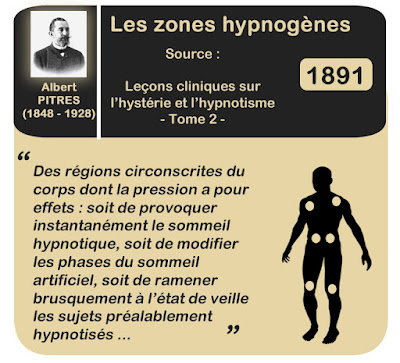La technique de pantomime
Juste avant la réunion, l’auteur a été informé qu’il devait présenter l’hypnose comme introduction à son exposé en employant comme sujet une infirmière choisie qui ne connaissait rien de l’hypnose ni de l’auteur et qui ne savait ni parler ni comprendre l'anglais - ils savaient déjà que je ne pouvais ni parler ni comprendre l'espagnol. Ils lui avaient expliqué en privé que j'étais un médecin nord-américain qui aurait besoin de son aide silencieuse. Ils l'ont informée de nos handicaps linguistiques communs et lui ont assuré qu'elle serait pleinement respectée par moi. Par conséquent, elle ignorait totalement ce que l'on attendait d'elle.
Cette proposition inattendue adressée à l'auteur a conduit à une réflexion rapide sur ses utilisations partielles passées de la pantomime par le geste, les expressions faciales, etc. Cela a conduit à la conclusion que ce développement inattendu offrait une opportunité unique. Il faudrait utiliser une technique totalement pantomime et l’état d’incertitude mentale et de le désir de comprendre produirait le même type de volonté d'accepter toute communication compréhensible par pantomime que celle concernant les communications claires et compréhensibles (clear-cut) utilisées dans la technique de confusion.
Elle a ensuite été amenée par une porte latérale pour se confronter à moi. Silencieusement, nous nous sommes regardés, puis - comme je l'avais déjà fait de nombreuses fois auparavant avec des séminaristes aux États-Unis cherchant ce que je considère cliniquement comme des sujets réceptifs avant le début d'un séminaire et donc avant d'être connu par eux, je me dirigeai vivement vers elle avec un sourire et tendit la main droite. Elle tendit la sienne. Lentement, je lui serrai la main, la regardant dans les yeux comme elle me regardait, et lentement j'ai cessé de sourire.
Alors que je lâchais sa main, le faisant d'une manière inhabituelle et incertaine, en la retirant lentement, augmentant légèrement la pression avec mon pouce, puis avec le petit doigt, puis avec le majeur, toujours de manière incertaine, inhabituelle, hésitante, et retirant si doucement ma main qu’elle n’aurait aucune conscience précise du moment où je lâchai sa main ou quelle partie de sa main j'avais touché la dernière. En même temps, je changeais lentement le point de mire de mes yeux en modifiant leur convergence, lui donnant ainsi un indice minimal mais appréciable que je semblais regarder non pas dans ses yeux mais à travers ses yeux derrière au loin.
Lentement, les pupilles de ses yeux se dilatèrent et, ce faisant, je relâchai doucement sa main, la laissant en l'air dans une position cataleptique. Une légère pression vers le haut sur le talon de sa main la souleva légèrement. Puis la catalepsie fut démontrée dans l'autre bras également, et elle est resta immobile. Lentement je fermai les yeux et elle fit de même...
------- Texte original -----------
Just before the meeting the author was informed that he was to demonstrate hypnosis as the introduction to his lecture by employing as a subject a nurse they had selected who knew nothing about hypnosis nor about the author and who could neither speak nor understand English—they already knew that I could not speak nor understand Spanish. They had explained privately to her that I was a North American doctor who would need her silent assistance and they informed her of our mutual language handicaps and assured her that she would be fully respected by me. Hence she was totally unaware of what was expected of her.
This unexpected proposal to the author led to rapid thinking about his past partial uses of pantomime by gesture, facial expressions, etc. This lead to the conclusion that this unexpected development offered a unique opportunity. A completely pantomime technique would have to be used, and the subject’s own state of mental uncertainty and eagerness to comprehend would effect the same sort of readiness to accept any comprehensible communication by pantomime as is affected by clear-cut definite communications in the Confusion Technique (“The confusion technique in hypnosis” this volume, Section 2). She was then brought through a side door to confront me. Silently we looked at each other, and then—as I had done many times previously with seminarians in the United States in seeking out what I consider clinically to be “good responsive” subjects before the beginning of a seminar and hence before I was known to them—I
walked toward her briskly and smilingly and extended my right hand, and she extended hers. Slowly I shook hands with her, staring her fully in the eyes even as she was doing to me, and slowly I ceased smiling. As I let loose of her hand, I did so in an uncertain, irregular fashion, slowly withdrawing it, now increasing the pressure slightly with my thumb, then with the little finger, then with the middle finger, always in an uncertain, irregular, hesitant manner, and finally so gently withdrawing my hand that she would have no clear-cut awareness of just when I had released her hand or at what part of her hand I had last touched. At the same time I slowly changed the focus of my eyes by altering their convergence, thereby giving her a minimal but appreciable cue that I seemed to be looking not at but through her eyes and off into the distance. Slowly the pupils of her eyes dilated, and as they did so, I gently released her hand completely, leaving it in midair in a cataleptic position. A slight upward pressure on the heel of her hand raised it slightly. Then catalepsy was demonstrated in the other arm also, and she remained staring unblinkingly.
Slowly I closed my eyes, and so did she.






